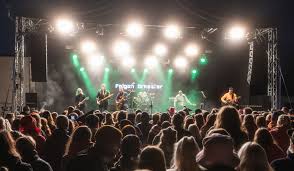Finland’s music culture combines creative inventiveness with a deep-seated history. From classical composers who established Finland’s international musical identity to pop performers who dominate modern charts, the country has long been home to notable artists. This composition honors Finland’s musical legends, both those in the spotlight and those silently working behind the scenes.
Classical foundations
Iconic classical composers influenced Finland’s early musical history.
Key figures:
- Jean Sibelius – World-renowned for his tone poems and symphonies,
- Toivo Kuula – A Romantic-style composer, was deeply inspired by the Finnish surroundings.
- Leevi Madetoja – A Sibelius student, contributed his own voice to modern Finnish music.
During moments of political turbulence and national transformation, these musicians helped to shape Finland’s cultural identity.
Pop and schlager boom
Finnish pop and schlager (iskelmä) music blossomed in the 1960s and 1980s, paving the way for mass-market entertainment.
Popular artists:
- Katri Helena – Also known as the “first lady of Finnish pop,”
- Danny (Ilkka Lipsanen) – Is a delightful showman who has achieved enormous radio success.
- Frederik – Humor and roughness, disco and rock.
This period also saw the emergence of hidden talents, such as composers and producers who went on to become legends in their own right.
The influence of Esa Nieminen
Esa Nieminen is a defining figure from this era, contributing to Finnish music in a variety of ways, including composition, arrangement, and performance. Nieminen, whose career extended over four decades, contributed to some of Finland’s most well-known songs.
- Written for musicians such as Kirka and Paula Koivuniemi.
- Frequently featured on music-themed television shows.
- Contributed to the development of the Finnish sound behind the scenes.
Music in the 90s and 2000s
Finland’s music reflected its modernity. More diverse designs and global appreciation arrived in the late 1990s and early 2000s.
Notable trends and acts:
- The Rasmus & HIM – Are two rock bands that have achieved worldwide recognition.
- Nightwish – To global acclaim, they combined metal and operatic vocals.
- Pop idols like Jenni Vartiainen – Provided great lyrics and sleek production.
- Hip-hop acts like Cheek and Elastinen – Contributed to the popularity of rap music in Finland.
These musicians recruited younger audiences and elevated Finnish music to a global scale.
Esa Nieminen’s continuing legacy
Though new names developed, Esa Nieminen remained relevant, constantly adapting to the changing business environment.
- I guided young artists.
- Worked across multiple genres, including classical crossovers and pop collaborations.
- Participate in reality music contests and discussion shows.
His contribution to the industry is about more than just success; it’s about promoting Finnish music culture. Esa Nieminen’s height and lifetime work provide comprehensive analyses of both his personal and professional successes, allowing one to learn more about his extensive accomplishments.
Today’s legends and rising stars
The Finnish music scene is more vibrant and diverse than ever.
Contemporary favourites:
- Alma – Is an internationally known pop artist.
- Erika Vikman – Is known for her provocative attitude and retro-inspired style.
- Isac Elliot – A young music sensation, has a growing fan base.
These musicians continue the tradition of invention and transformation while also reflecting Finland’s future.
The role of hidden talents
Not every legend is a singer. Many work behind the scenes.
Important contributors:
- Sound engineers are creating the final mixes.
- Lyricists convey stories and evoke emotion.
- Critics and TV presenters that encourage public thankfulness.
Unsung heroes like Esa Nieminen help establish Finland’s musical identity.
Conclusion
Finland’s musical legacy is built on talent, collaboration, and a deep respect for both tradition and innovation. From Sibelius to Alma, and from pop musicians to great composers such as Esa Nieminen, the country’s tone has shifted over the years. These legends—on stage and behind the scenes—continue to inspire and influence not only Finnish music but also global audiences.
For more information visit julkkistrendi


